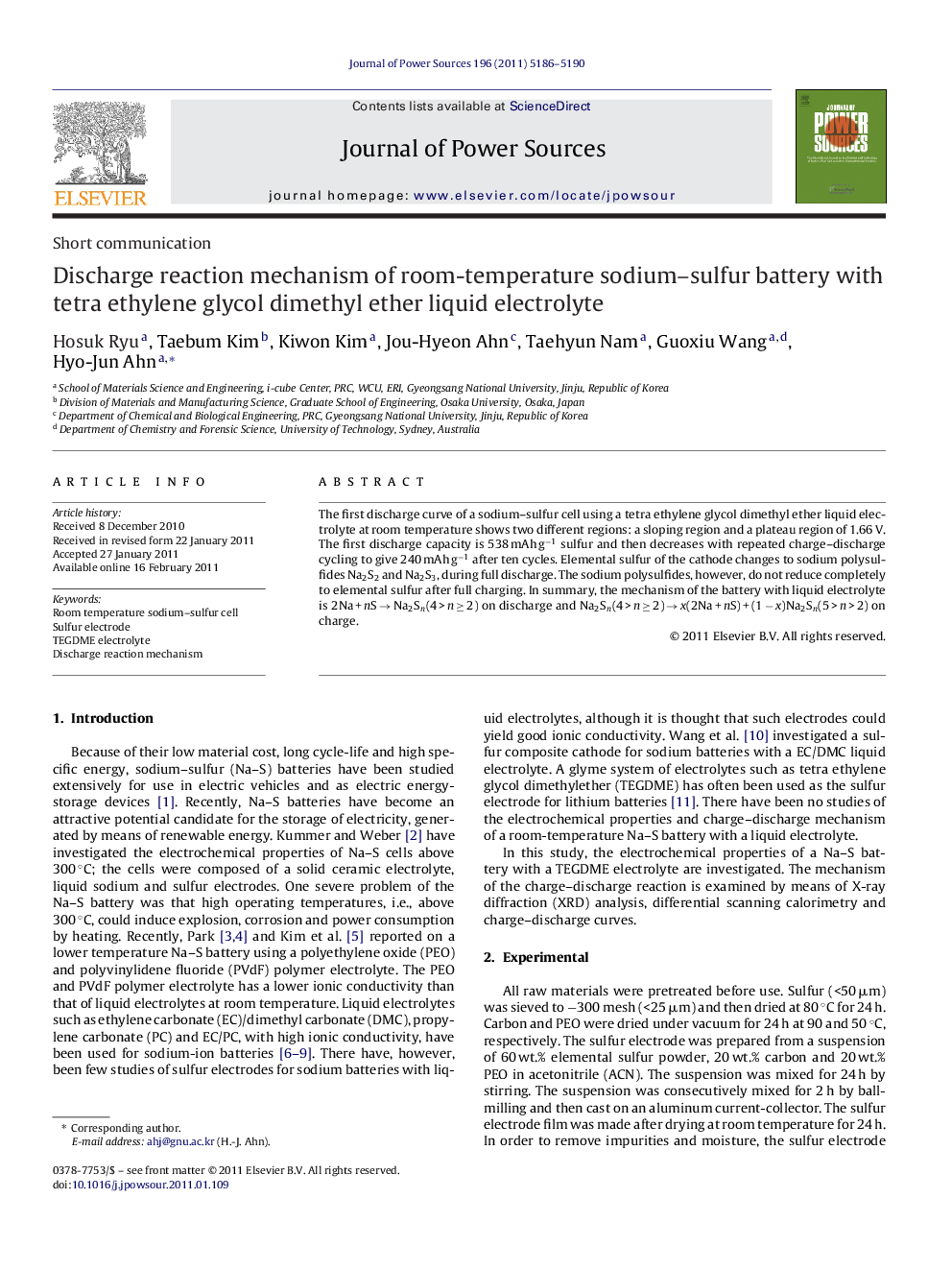| Article ID | Journal | Published Year | Pages | File Type |
|---|---|---|---|---|
| 1284794 | Journal of Power Sources | 2011 | 5 Pages |
The first discharge curve of a sodium–sulfur cell using a tetra ethylene glycol dimethyl ether liquid electrolyte at room temperature shows two different regions: a sloping region and a plateau region of 1.66 V. The first discharge capacity is 538 mAh g−1 sulfur and then decreases with repeated charge–discharge cycling to give 240 mAh g−1 after ten cycles. Elemental sulfur of the cathode changes to sodium polysulfides Na2S2 and Na2S3, during full discharge. The sodium polysulfides, however, do not reduce completely to elemental sulfur after full charging. In summary, the mechanism of the battery with liquid electrolyte is 2Na + nS → Na2Sn(4 > n ≥ 2) on discharge and Na2Sn(4 > n ≥ 2) → x(2Na + nS) + (1 − x)Na2Sn(5 > n > 2) on charge.
Research highlights► A sodium/sulfur cell using tetra ethylene glycol dimethyl ether (TEGDME) liquid electrolyte at room temperature has 538 mAh g−1 sulfur of the first discharge capacity and decreases to 240 mAh g−1 after ten cycles. The mechanism of the battery is 2Na + nS → Na2Sn(4 > n ≥ 2) at discharge and Na2Sn(4 > n ≥ 2) → x (2Na + nS) + (1 − x)Na2Sn(5 > n > 2) at charge. The decrease in discharge capacity is due to a decrease in active material by dissolution of sulfur or sodium polysulfides into the electrolyte and the irreversible reduction from sodium sulfides to elemental sulfur at full charge.
